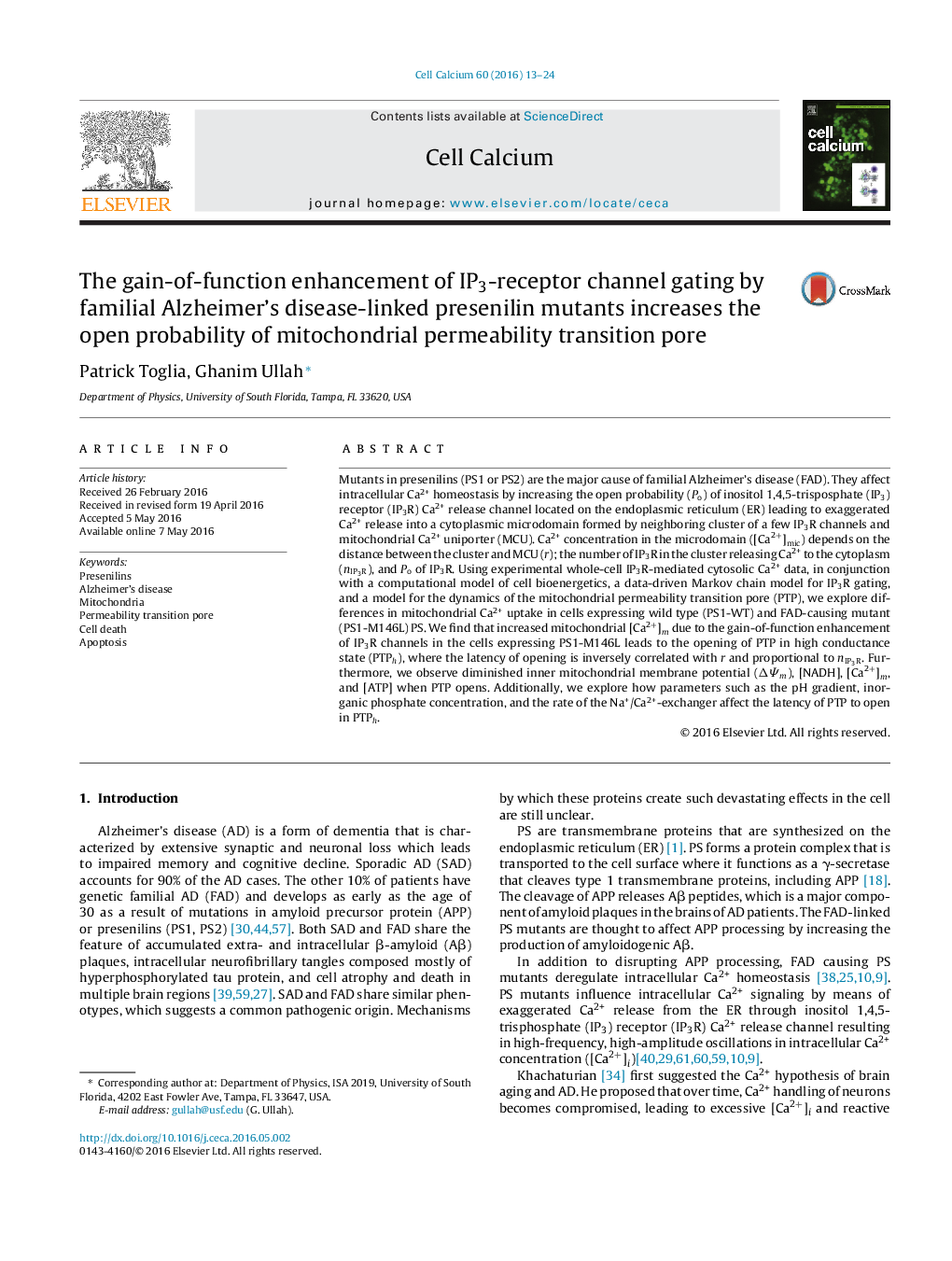| Article ID | Journal | Published Year | Pages | File Type |
|---|---|---|---|---|
| 2165843 | Cell Calcium | 2016 | 12 Pages |
•Higher ΔpH increases the latency of PTP openings.•Pi sensitizes PTP.•Na+/Ca2+ exchanger rate influences PTP opening latency.
Mutants in presenilins (PS1 or PS2) are the major cause of familial Alzheimer's disease (FAD). They affect intracellular Ca2+ homeostasis by increasing the open probability (Po) of inositol 1,4,5-trisposphate (IP3) receptor (IP3R) Ca2+ release channel located on the endoplasmic reticulum (ER) leading to exaggerated Ca2+ release into a cytoplasmic microdomain formed by neighboring cluster of a few IP3R channels and mitochondrial Ca2+ uniporter (MCU). Ca2+ concentration in the microdomain ([Ca2+]mic[Ca2+]mic) depends on the distance between the cluster and MCU (r); the number of IP3R in the cluster releasing Ca2+ to the cytoplasm (nIP3RnIP3R), and Po of IP3R. Using experimental whole-cell IP3R-mediated cytosolic Ca2+ data, in conjunction with a computational model of cell bioenergetics, a data-driven Markov chain model for IP3R gating, and a model for the dynamics of the mitochondrial permeability transition pore (PTP), we explore differences in mitochondrial Ca2+ uptake in cells expressing wild type (PS1-WT) and FAD-causing mutant (PS1-M146L) PS. We find that increased mitochondrial [Ca2+]m[Ca2+]m due to the gain-of-function enhancement of IP3R channels in the cells expressing PS1-M146L leads to the opening of PTP in high conductance state (PTPh), where the latency of opening is inversely correlated with r and proportional to nIP3RnIP3R. Furthermore, we observe diminished inner mitochondrial membrane potential (ΔΨm), [NADH], [Ca2+]m[Ca2+]m, and [ATP] when PTP opens. Additionally, we explore how parameters such as the pH gradient, inorganic phosphate concentration, and the rate of the Na+/Ca2+-exchanger affect the latency of PTP to open in PTPh.
Graphical abstractFigure optionsDownload full-size imageDownload as PowerPoint slide
